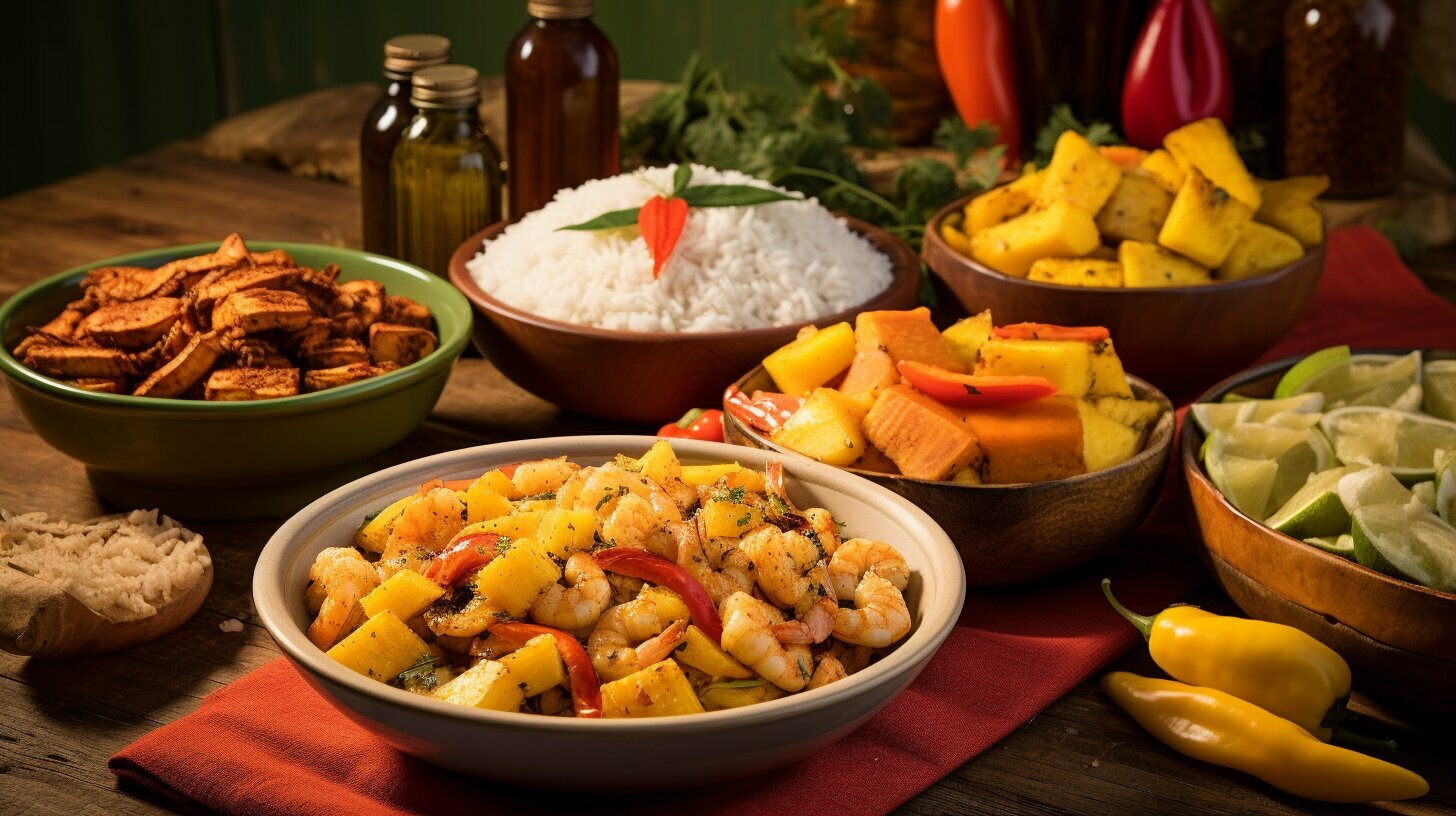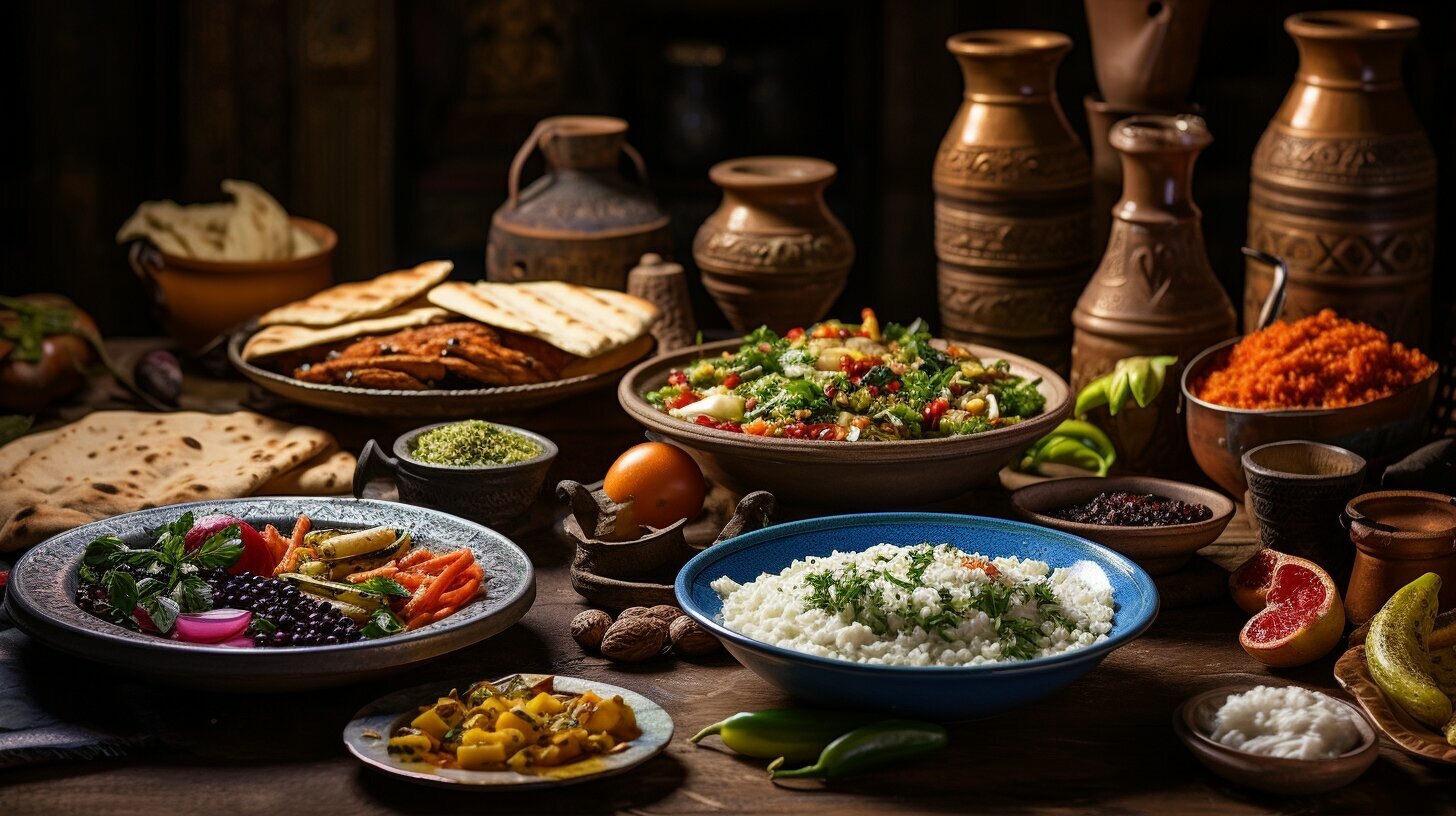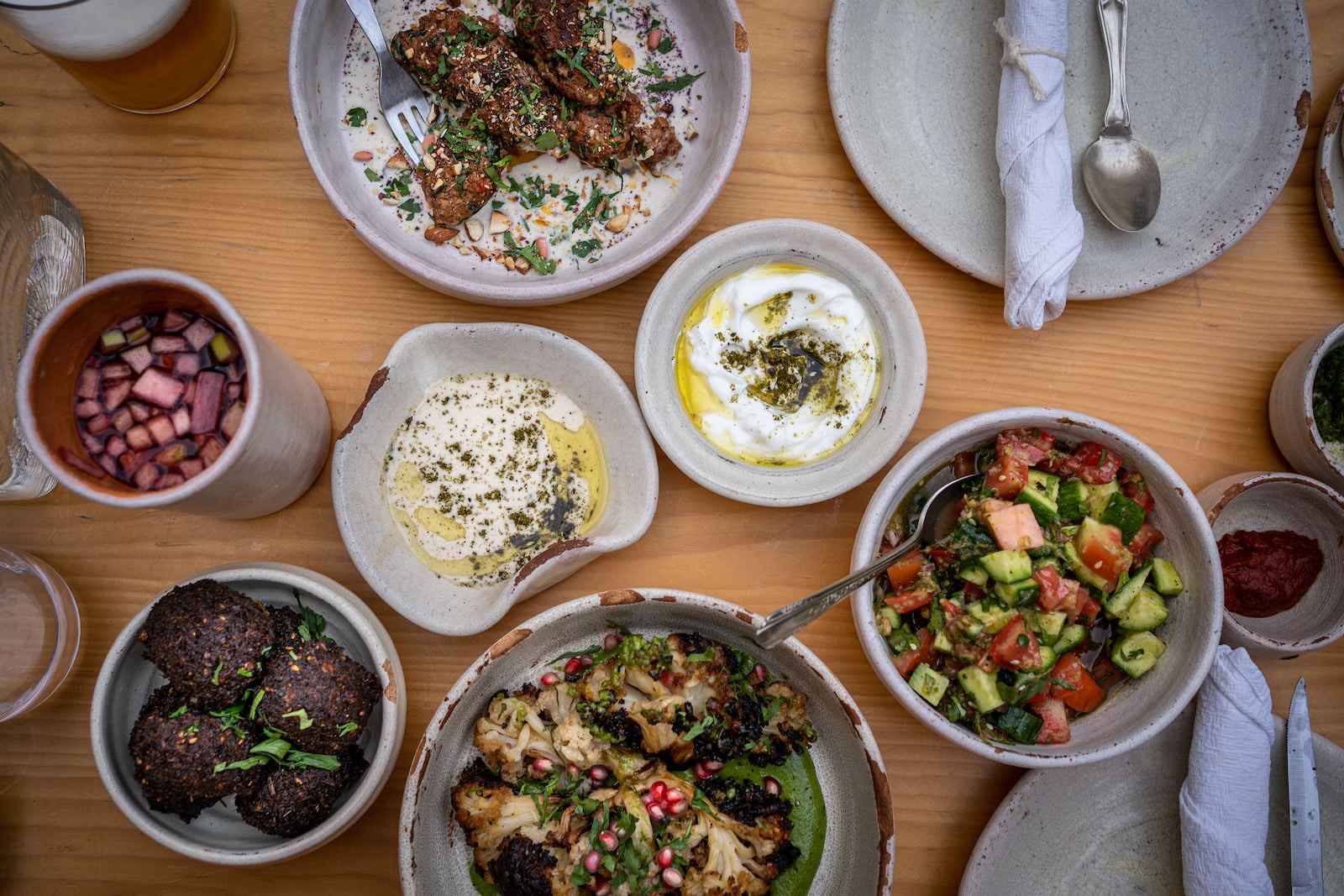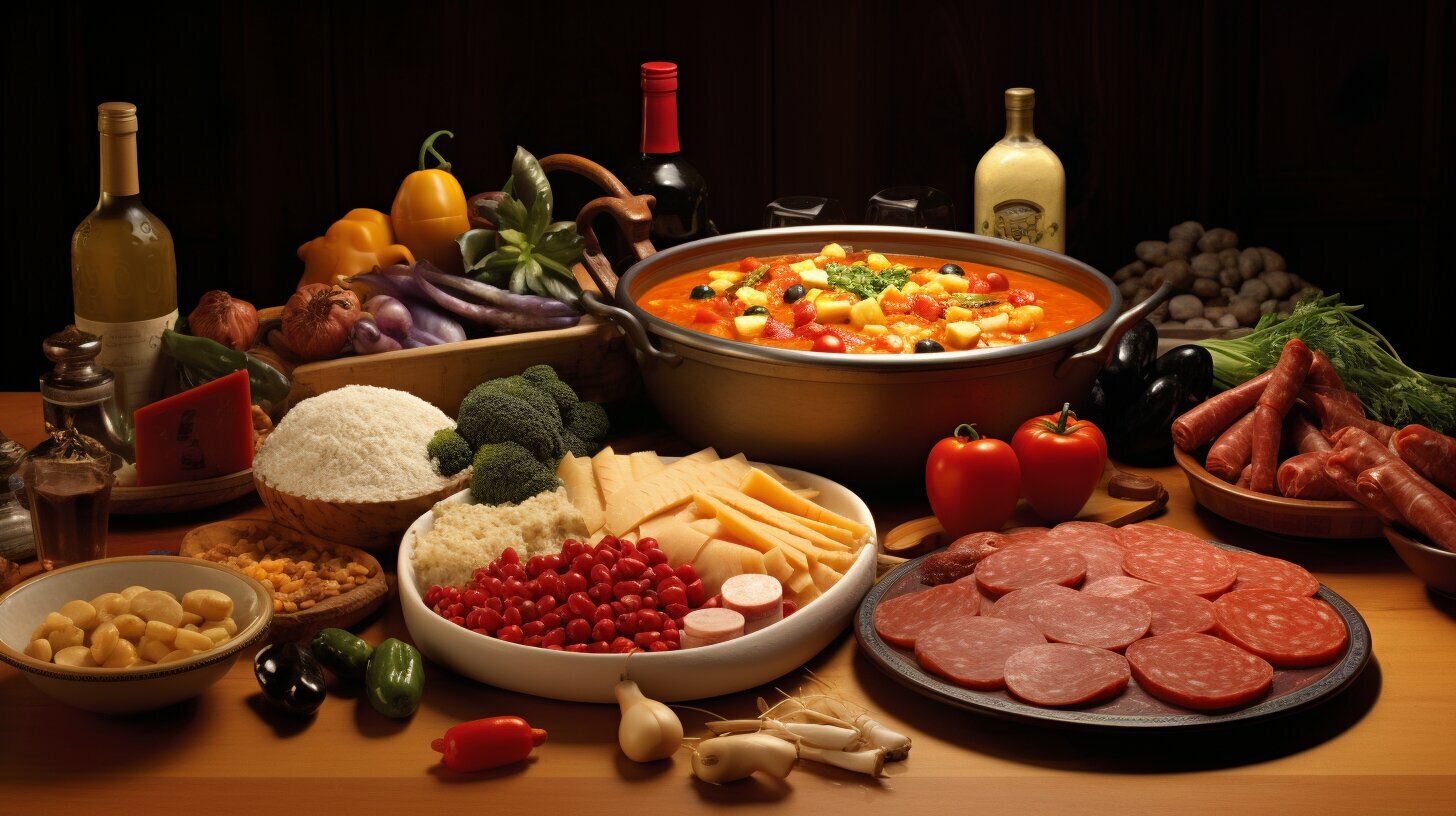When it comes to world cuisine, Caribbean and Cajun dishes are among the most beloved and influential. These two styles of cooking may share some similarities, but they also have distinct characteristics that set them apart. If you’re a foodie looking to explore the difference between Caribbean and Cajun cuisine, you’re in the right place!
In this article, we’ll delve into the origins, flavor profiles, signature dishes, ingredients, culinary techniques, and traditions associated with these two culinary styles. By the end, you’ll have a better understanding and appreciation of the unique tastes and cultural significance of Caribbean and Cajun cuisine.
Key Takeaways
- Caribbean and Cajun cuisine are two beloved and influential styles of cooking.
- Although there are some similarities between the two, they also have distinct characteristics that set them apart.
- This article will explore the origins, flavor profiles, signature dishes, ingredients, culinary techniques, and traditions associated with Caribbean and Cajun cuisine.
Origins and Influences
In order to understand the differences between Caribbean and Cajun cuisine, it’s important to first examine their origins and influences. Caribbean cuisine, for example, is heavily influenced by a combination of African, European, and indigenous cultures that have called the Caribbean home over the centuries. From the West African dishes brought over by enslaved people to the Spanish and French influences of the colonial era, Caribbean cuisine is a true melting pot of different cultures and flavors.
Cajun cuisine, on the other hand, is deeply rooted in the history and traditions of the French-speaking Acadian people who settled in Louisiana in the 18th century. From the French techniques and ingredients they brought with them to the influence of local Native American and African American cooking methods, Cajun cuisine reflects a unique blend of cultures and flavors.
Characteristics of Caribbean and Cajun Cuisine
The characteristics of Caribbean and Cajun cuisine are also shaped by their regional differences. Caribbean cuisine is often associated with the sunny, tropical islands that dot the region, and is characterized by its use of fresh seafood, bold spices, and tropical fruits. In contrast, Cajun cuisine is typically associated with the bayous and swamps of southern Louisiana, and is known for its hearty stews, spicy meats, and rich, buttery sauces.
What sets Caribbean and Cajun cuisine apart, then, is the unique combination of historical, cultural, and regional influences that make each one distinct. From the ingredients and techniques used to the cultural traditions that celebrate them, Caribbean and Cajun cuisine offer a rich and varied culinary experience to those lucky enough to try them.
Flavor Profiles
When it comes to Caribbean vs Cajun cooking, the flavor profiles are distinctly different. Caribbean cuisine is known for its vibrant and tropical flavors, thanks to the generous use of spices and fresh ingredients. From jerk seasoning to spicy marinades and tropical fruits, Caribbean dishes are bursting with flavor.
In contrast, Cajun cuisine is characterized by its robust and rich flavors. The use of spices like paprika, cayenne pepper, and garlic lends a smoky, savory flavor to Cajun dishes.
One key difference between Caribbean and Cajun cuisine is the use of heat. While both cuisines incorporate spicy ingredients, Caribbean cooking tends to be spicier overall. Scotch bonnet peppers, a fiery chili pepper, are a common ingredient in Caribbean cooking.
Another notable difference is the use of sweet flavors in Caribbean cooking. Many Caribbean dishes feature sweet components, like sugar or tropical fruits, to balance out the spice. In Cajun cooking, the focus is on savory flavors, with little to no sweetness.
Signature Dishes and Ingredients
Caribbean and Cajun cuisine are defined by their signature dishes and unique ingredients. Both cuisines use a blend of spices and seasonings to create bold and flavorful dishes that are beloved around the world.
| Caribbean Cuisine | Cajun Cuisine |
|---|---|
| Jerk chicken | Gumbo |
| Curries | Jambalaya |
| Plantains | Crawfish |
Caribbean cooking is known for its use of tropical fruits and spicy marinades, such as jerk seasoning. Coconut milk, allspice, and scotch bonnet peppers are also popular ingredients in Caribbean cuisine. Cajun cooking, on the other hand, favors spices like paprika, cayenne pepper, and garlic. The “holy trinity” of onions, bell peppers, and celery is commonly used in Cajun dishes.
Both cuisines share a love for seafood, and shrimp, crab, and crawfish are commonly used in Cajun dishes. Meanwhile, Caribbean cuisine features a lot of stews and curries, often made with goat meat or chicken.
Whether you’re in the mood for spicy gumbo or fruity jerk chicken, Caribbean and Cajun cuisine have something delicious to offer. While the flavor profiles and signature dishes may differ, both cuisines are celebrated for their bold and unique culinary traditions.
Culinary Techniques and Traditions
Exploring Caribbean and Cajun cuisine involves understanding the unique culinary techniques and traditions that make each cuisine special. Caribbean cuisine is heavily influenced by African, European, and indigenous cultures. This blend of cultures gives rise to slow-cooking and stewing methods, which are commonly used in preparing Caribbean dishes. On the other hand, Cajun cuisine is known for its blackened technique, which involves searing meat, fish, or poultry in a cast-iron skillet.
In terms of cultural traditions, Caribbean food festivals celebrate the diverse range of dishes that originate from the region. These festivals encourage patrons to sample the cuisine, listen to live music, and take part in dancing and cultural activities. Cajun crawfish boils are another cultural tradition that involves boiling and seasoning a large pot of crawfish, potatoes, and corn on the cob. These communal gatherings typically take place in backyards and are a festive way to celebrate family and friends.
Importance of Culinary Techniques and Traditions
Culinary techniques and traditions are important aspects of Caribbean and Cajun food cultures. They play a vital role in preserving the authenticity of these cuisines and celebrating the cultural heritage of the region. Exploring these techniques and traditions allows both locals and visitors to gain a deeper appreciation for the culinary history and significance of these cuisines.
Conclusion
In conclusion, exploring the difference between Caribbean and Cajun cuisine has highlighted the unique characteristics and flavors that make these two cuisines stand out. Although both cuisines are popular and have influenced global cuisine, they have different origins, cultural backgrounds, and culinary traditions.
Caribbean cuisine is known for its vibrant, tropical flavors, such as jerk seasoning and spicy marinades, while Cajun cuisine is famous for its robust and rich flavors, such as the use of paprika, cayenne pepper, and garlic. Additionally, both cuisines have signature dishes and ingredients that set them apart, like jerk chicken and plantains in Caribbean cuisine and gumbo and crawfish in Cajun cuisine.
When it comes to culinary techniques and traditions, Caribbean cuisine is often slow-cooked and stewed, while Cajun cuisine uses the technique of blackening. Cultural traditions and events celebrate both cuisines, such as Caribbean food festivals and Cajun crawfish boils.
In summary, understanding the difference between Caribbean and Cajun cuisine is essential for appreciating the unique flavors and cultural significance of each. Whether you’re a fan of the spicy, tropical flavors of the Caribbean or the rich and robust flavors of Cajun cuisine, both styles of cooking offer different culinary experiences and delicious tastes.
Difference Between Caribbean and Cajun Cuisine
FAQ
Q: What is the difference between Caribbean and Cajun cuisine?
A: Caribbean and Cajun cuisine are both unique culinary traditions with their own distinct flavors and influences. Caribbean cuisine is known for its vibrant and tropical flavors, often featuring ingredients like jerk seasoning, tropical fruits, and spicy marinades. Cajun cuisine, on the other hand, is rich and robust, with flavors derived from spices like paprika, cayenne pepper, and garlic.
Q: What are some popular dishes in Caribbean and Cajun cuisine?
A: In Caribbean cuisine, popular dishes include jerk chicken, curries, and plantains. Cajun cuisine is known for iconic dishes like gumbo, jambalaya, and crawfish. Each cuisine has its own unique flavors and ingredients that make these dishes stand out.
Q: What are the key ingredients in Caribbean and Cajun cooking?
A: Caribbean cooking often incorporates ingredients like coconut milk, allspice, and scotch bonnet peppers for a tropical and spicy flavor profile. Cajun cooking relies on the “holy trinity” of onions, bell peppers, and celery, along with spices like paprika, cayenne pepper, and garlic, to create its distinctive taste.
Q: What culinary techniques are used in Caribbean and Cajun cuisine?
A: Caribbean cuisine often involves slow-cooking and stewing to develop rich flavors. In Cajun cuisine, the technique of blackening is commonly used to create a flavorful crust on meats or seafood. Both cuisines have their own unique cooking methods that contribute to their distinct culinary styles.
Q: Are there any cultural traditions associated with Caribbean and Cajun food?
A: Yes, both Caribbean and Cajun cuisines are celebrated through cultural traditions and events. Caribbean food festivals showcase the vibrant flavors and dishes of the region, while Cajun crawfish boils are a popular tradition in Louisiana. These events highlight the cultural significance and community spirit associated with these cuisines.
 Skip to main content
Skip to main content


